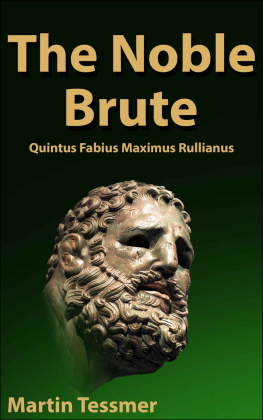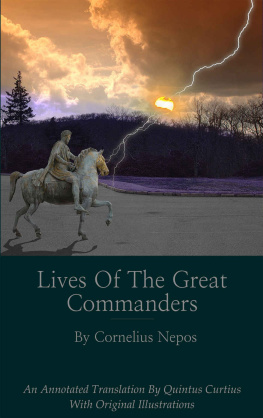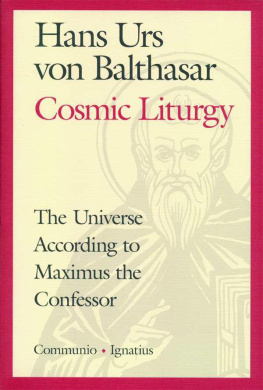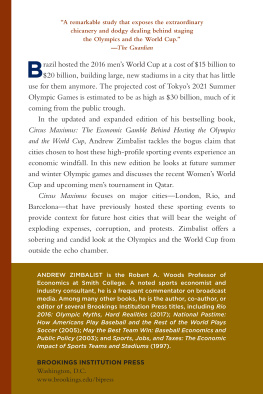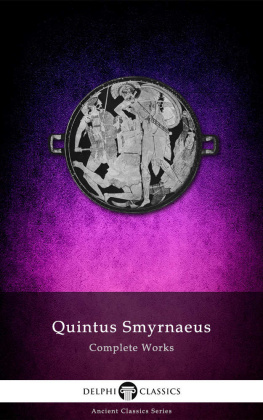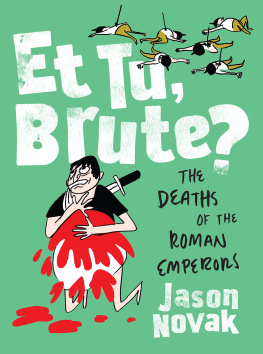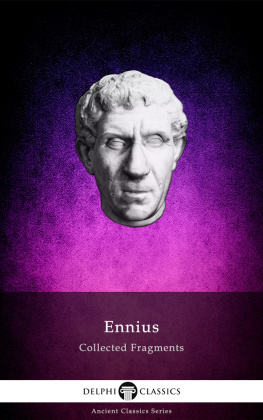Martin Tessmer - The Noble Brute: Quintus Fabius Maximus Rullianus
Here you can read online Martin Tessmer - The Noble Brute: Quintus Fabius Maximus Rullianus full text of the book (entire story) in english for free. Download pdf and epub, get meaning, cover and reviews about this ebook. year: 2020, publisher: Dancing in Chains, genre: Detective and thriller. Description of the work, (preface) as well as reviews are available. Best literature library LitArk.com created for fans of good reading and offers a wide selection of genres:
Romance novel
Science fiction
Adventure
Detective
Science
History
Home and family
Prose
Art
Politics
Computer
Non-fiction
Religion
Business
Children
Humor
Choose a favorite category and find really read worthwhile books. Enjoy immersion in the world of imagination, feel the emotions of the characters or learn something new for yourself, make an fascinating discovery.
- Book:The Noble Brute: Quintus Fabius Maximus Rullianus
- Author:
- Publisher:Dancing in Chains
- Genre:
- Year:2020
- Rating:5 / 5
- Favourites:Add to favourites
- Your mark:
- 100
- 1
- 2
- 3
- 4
- 5
The Noble Brute: Quintus Fabius Maximus Rullianus: summary, description and annotation
We offer to read an annotation, description, summary or preface (depends on what the author of the book "The Noble Brute: Quintus Fabius Maximus Rullianus" wrote himself). If you haven't found the necessary information about the book — write in the comments, we will try to find it.
The Noble Brute: Quintus Fabius Maximus Rullianus — read online for free the complete book (whole text) full work
Below is the text of the book, divided by pages. System saving the place of the last page read, allows you to conveniently read the book "The Noble Brute: Quintus Fabius Maximus Rullianus" online for free, without having to search again every time where you left off. Put a bookmark, and you can go to the page where you finished reading at any time.
Font size:
Interval:
Bookmark:
The Noble Brute
Book One of the
Quintus Fabius Maximus Rullianus
Trilogy
Martin Tessmer
Copyright 20
All rights reserved
ALSO BY MARTIN TESSMER
FICTION
Scipio Rising
The Three Generals
Scipio's Dream
Scipio Risen
Scipio Rules
Scipio's End
NONFICTION
50 Hikes in Arizona
Weekend Wilderness
Writing Online Training Tutorials
Planning and Conducting Formative Evaluations
Analysing the Instructional Setting
Task Analysis Methods
A NonProgrammer's Guide to Online Training
Dedication
To Cheri
AMOR VINCIT OMNIA
TABLE OF CONTENTS
I. Rullianus Precursors: Decius, Torquatus, and Papirius
II. The Ghosts of Legacy: The Fabii and Claudii
III. Rullianus Rises
IV. Rullianus Rebels
V. The Crime of Victory
VI. Escape
VII. The Trials of Rullianus
VIII. The Curse of Obedience
IX. The Salvation of Disobedience
X. Savior
XI. Capua
XII. Consul
XIII. The Plains of the Naked Dead
XIV. Maximus
End Notes
ACKNOWLEDGMENTS
Among classic historians, I owe a deep debt of gratitude to Titus Livius (Livy) for Rome and Italy (translated by Betty Radice) and Polybius for The Histories (translated by Robin Waterfield). Cassius Dios Roman History provided additional details and confirmed some of Livys and Polybius assertions. Appian, Dodge, and Mommsen, thanks to you all for the tidbits and corrections your works provided me.
Among 20 th and 21 st century historians, I am primarily indebted to Professor Richard Gabriel for his Ancient Arms and Armies of Antiquity .
Finally, I must give a tip of the hat to Wikipedia. Wikimedia Commons, and the scores of websites about the people of ancient Italia. The scholarship of our 21 st century digital community is amazing.
This is a work of historical fiction, meaning it combines elements of historical fact (such as it is) and fiction. It is not a history textbook.
There is scant information about Quintus Fabius Maximus Rullianus, and about 4 th century BCE Italia. The books major characters, places, events, battles, and timelines are real, meaning they are noted by at least one of our acknowledged historians such as Livy, Polybius, Mommsen, and Gabriel. You will see footnotes scattered throughout the text, my effort to document various aspects of this book.
I have included several quotes of the major characters actual words, as described by Livy. You will find a source footnote to those at the end of the quote. Wherever possible, I have included an online link to a website or blog about an interesting topic, not because these links were my sole or main source of information about it, but because these links are easier for readers to access than the historical documents.
The transition from the phalanx to maniple formation occurred during this time period, as did the changes in Roman swords and shields. I have used Quintus Fabius story to dramatize those changes, but they cannot be solely attributed to him. The maniple formation went through a series of adjustments in formation and numbers. The maniples described herein reflect that period of experimentation and adjustment.
The winner of the Battle of the Volturnus River has been attributed to either Quintus Fabius Maximus Rullianus or to the dictator Aulus Cornelius, who was perchance appointed to carry out religious duties instead of fighting the Samnites. Livys Book Nine mentions the ambiguity about who commandeered the Romans in that important battle. For purposes of this novel, I have stuck with Quintus Fabius.
IMAGE CREDITS
- Boxer of Quirnal image by Carol Raddato, via Wikimedia Commons.
- Publius Decius Mus image by Jacob Matthias, courtesy of Wikimedia Commons.
- Phalanx Formation by Edmund Ollier, courtesy of Wikimedia Commons.
- Pankratist by Matthis Kabel, courtesy of Wikimedia Commons.
- Roman Blacksmith by York Trust Staff, via Wikimedia Commons.
- Greek Magical Papyri by Okar, courtesy of Pinterest.
- Roman Triumph by Jean Guillaume Moitte, via Wikimedia Commons.
- Lictor by Unknown, courtesy of Wikimedia Commons.
- Forum Rostra by Mark James Miller, via Wikimedia Commons.
- Samnite Warriors by Champs de Batailles, via Wikimedia Commons.
- Goddess Fortuna by Giovanni Dall Orto , via Wikimedia Commons.
- Pilum image by Xocolatl, courtesy of Wikimedia Commons.
- Ancient Capua by Giovanni Battista Pacichelli, via Wikimedia Commons.
- Testudo by Conrad Cichorius, courtesy of Wikimedia Commons.
- Roman Equite by Didymus Ridgeland, courtesy of Wikimedia Commons.
- Roman Priest image provided by Walters Art Museum, courtesy of Wikimedia Commons.
- Battle maps created by Martin Tessmer

Occasionally, a truly outstanding commander took control of the mid-Republican army.
Fabius Rullianus, a brilliant and underrated commander, defeated the Etruscans and Samnites at the decisive battle at Sentinum.
This victory was Romes most important in its rise to domination of Italy.
Jonathan P. Roth. War. In The Cambridge History of Greek and Roman Warfare, eds. P Sabin, H. Van Hess, & M Whitby. 2007. Cambridge: at the University Press. P. 373 .
Dramatis Personae
I. Rullianus' Precursors: Decius, Torquatus, and Papirius.
Publius Decius Mus (Elder). Roman consul. Father to Publius Decius.
Marcus Valerius. Friend and priest to Publius Decius Mus.
Aurelia Julia. Wife of Publius Decius Mus.
Titus Manlius Torquatus. Third Legion commander. Coconsul with Publius Decius Mus.
Titus Manlius. Decurion. Son of Titus Torquatus.
Marcus Furius. Third Legion Master of Horse,
Volesus Julius. Second Legion Master of Horse.
Jainus Numisius. Commander of the Latin army.
Publius Decius Mus (Younger). Son of Publius Decius Mus.
Lucius Papirius Cursor. Lucius' Crassus' Master of Horse.
Larthus Burbatus. Commander of the Samnite army.
II. The Ghosts of Legacy: The Fabii and Claudii
Quintus Fabius Rullianus. Consul and dictator. Son of Marcus Fabius Ambustus.
Ham. Roman armorer and pankratist. Friend to Quintus Fabius.
Cassia. Owner of Cassia's Wine Bar.
Marcus Fabius Ambustus. Consul. Father to Quintus Fabius Rullianus' father.
Marcus Fabius (the Younger). Adopted brother to Rullianus.
Sergia Claudius. Herbalist and healer. Mother of Appius Claudius.
Appius Claudius. Roman consul. Rullianus' enemy. Sergia's son.
Ulpia. Etruscan house slave to Portia Tullia.
Cornelia Tertia. Magician and astrologer. Quintus Fabius' wife.
III. Rullianus Rises
Gaius Valerius. Roman consul during the trial of Sergia Claudius.
Cumo. Samnite chieftain and strategist.
Lucius Furius Camillus. Roman consul in 325 BCE.
Junius Brutus. Roman consul in 325 BCE.
Arla. Ham's sister.
IV. Rullianus Rebels
Titus Geganius. Master of Horse for Lucius Papirius Cursor.
V. The Crime of Victory
Julia Fabius. Rullianus' mother.
Laelia Segunda. Wife of the censor Vespasian.
Senate Elder. Leader of the Senate.
Tiberius Vespasian. Senator who opposes indenture for indebtedness.
Lucius Cominius. Equite in Papirius' army. Rullianus' confidante.
Lucius Papirius Crassus. Consul. Lucius Papirius Cursor's uncle.
Caesar. Roman messenger.
Marcus Valerius. Second Legion legate.
Quintus Pedius. Third Legion legate.
VI. Escape
Pulchria. Madam of the House of Pulchria.
Font size:
Interval:
Bookmark:
Similar books «The Noble Brute: Quintus Fabius Maximus Rullianus»
Look at similar books to The Noble Brute: Quintus Fabius Maximus Rullianus. We have selected literature similar in name and meaning in the hope of providing readers with more options to find new, interesting, not yet read works.
Discussion, reviews of the book The Noble Brute: Quintus Fabius Maximus Rullianus and just readers' own opinions. Leave your comments, write what you think about the work, its meaning or the main characters. Specify what exactly you liked and what you didn't like, and why you think so.

